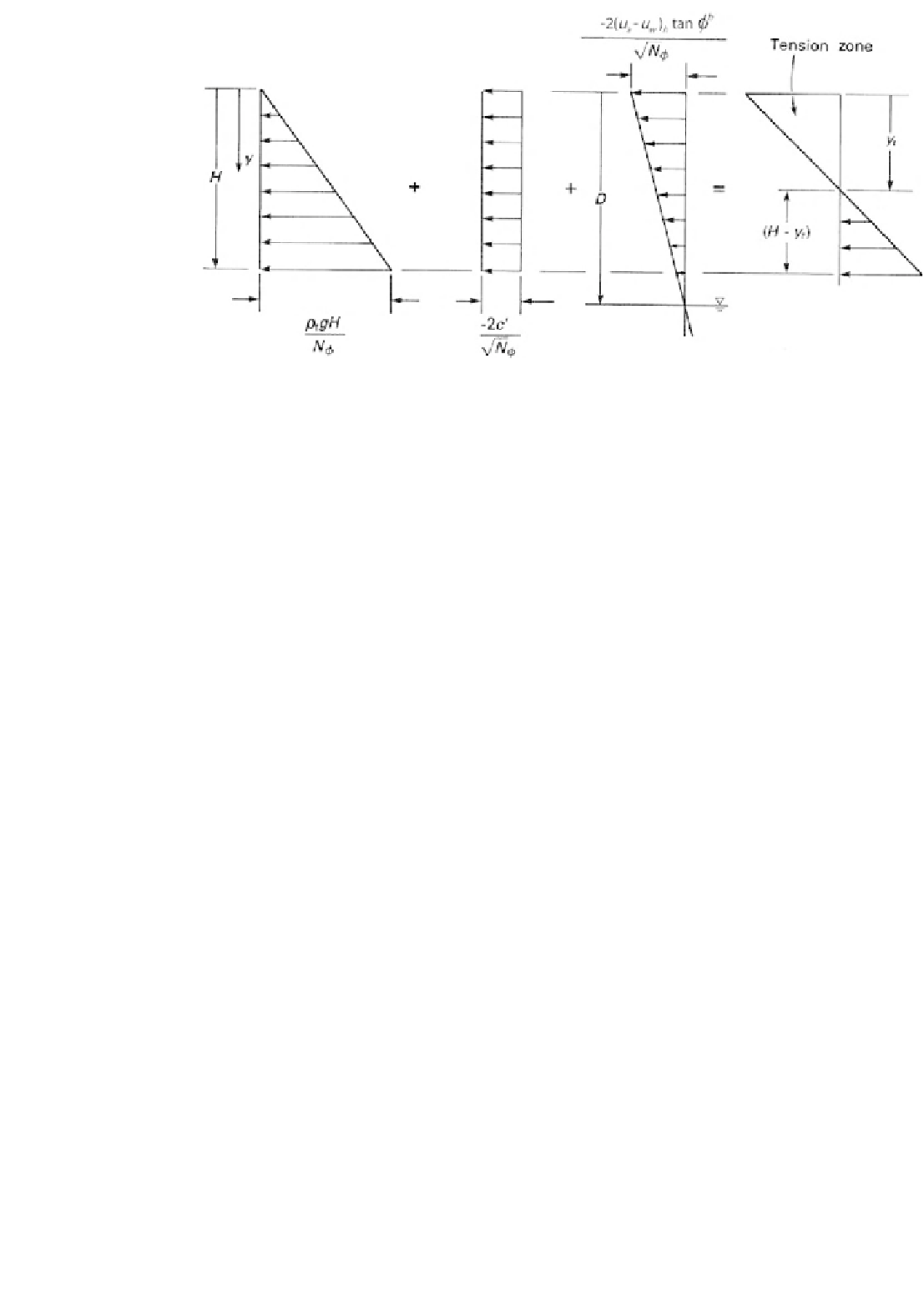Environmental Engineering Reference
In-Depth Information
Figure 12.44
Components of active earth pressure distribution when matric suction decrease
linearly with depth.
Figure 12.45
Variables that must be designated when soil behind retaining wall has tension
cracks.
Equation 12.49 is an extension of Eq. 12.47, and shows the
role of a surcharge load in affecting the active earth pressure.
The components which make up the active earth pressure
diagram for all depths are shown in Fig. 12.46. Other types
of surcharge load can be applied in a similar manner.
The tension zone depth
y
t
can be computed as the depth
where the horizontal stress is zero:
greater than the vertical pressure. The total horizontal stress
is the major principal stress when failure occurs in the soil
mass. The total vertical stress is the minor principal stress.
The horizontal stress corresponding to the passive state can
be computed from the vertical stress and the failure criterion
for the soil. Figure 12.38 illustrates the passive pressure in
a soil mass as a function of matric suction. The passive
pressure is shown to increase as matric suction increases.
Let us consider a vertical plane corresponding to a specific
matric suction plane, as shown in Fig. 12.38. An element
from a depth
y
has an overburden pressure
σ
v
. An element
of soil is shown in Fig. 12.47, along with the definition
of pertinent variables. The passive pressure can be defined
as
σ
h
−
2
c
N
φ
+
u
w
)
h
tan
φ
b
N
φ
−
2
(u
a
−
q
s
y
t
=
2[
N
φ
/(D
(12.50)
ρg
+
−
y
c
)
]
(u
a
−
u
w
)
h
tan
φ
b
The above equation applies as long as the tension zone depth
y
t
is less than the distance,
D
y
c
. Other assumptions can be
made regarding the distribution of the pore-water pressures
with respect to depth. The same analytical procedure can be
used to compute the active earth pressure state at any depth.
−
u
a
for the case where the wall moves into the soil
mass. The horizontal pressure can be derived in terms of the
vertical pressure
σ
v
−
u
a
in a manner similar to that used
for the active pressure derivation:
12.3.9 Passive Earth Pressure
If the wall in Fig. 12.37 is moved toward the soil (i.e., the
soil is compressed), the horizontal pressure is increased to be
[
(σ
h
−
u
a
)
−
(σ
v
−
u
a
)
]
/
2
sin
φ
=
c
cot
φ
u
a
)
]
/
2
+
(12.51)
[
(σ
h
−
u
a
)
+
(σ
v
−













Search WWH ::

Custom Search